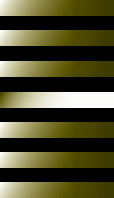Trademark Basics (1 of 3)
What is a trademark?
A trademark includes any word, name, symbol, or device, or any combination used, or intended to be used, in commerce to identify and distinguish the goods of one manufacturer or seller from goods manufactured or sold by others, and to indicate the source of the goods. A mark does not necessarily have to be simply words or a logo, it can be a three-dimensional symbol (e.g. the golden arches) a color (brown for UPS, orange for the label of Veuve Clicquot champagne) or even a sound (the NBC chimes, the MGM lion’s roar) or even a scent!
A service mark is any word, name, symbol, device, or any combination, used, or intended to be used, in commerce, to identify and distinguish the services of one provider from the services provided by others, and to indicate the source of the services.
Both trademarks and service marks can be registered and protected through the United States Patent and Trademark Office or on the state level with your state Secretary of State.
What is not a trademark?
Often attorneys hear from clients “I need to trademark my idea” or “I need to copyright my company name”. Patent law protects inventions that are novel, useful, and not obvious by granting its owner the right to exclude others from making, using, or selling the claimed invention. Copyrights protect original works of authorship (literary, sound recordings, audiovisual, choreography, etc) by providing copyright owners with the exclusive right to reproduce, distribute, exhibit or perform the copyrighted work.
Trademarks do not protect ideas or works of art or authorship. Further, trademarks cannot necessarily stop someone from copying your goods or services and no trademark can prevent others from using words that are descriptive or generic of the named good or service (e.g., dance factory, computer land, and vision center).
Marks can be described as:
- Fanciful: words that are "coined" or had no meaning before being trademarks (KODAK, STARBUCKS, VERIZON, POLAROID, EXXON);
- Arbitrary: common words used in a unique way so that the word has no relationship to the product (APPLE and SUN for computers, AMAZON and YAHOO! For Internet sites, GREY GOOSE for vodka);
- Suggestive: words that allude to a quality of the product ( PLAYBOY for a men's magazine, 7-11 for a store that was open from 7 a.m. to 11 p.m., JAGUAR and MUSTANG for fast cars);
- Descriptive trademarks: describe the goods or service they market (REGISTERINGATRADEMARK.COM for an Internet site that registers trademarks).
To Page 2

